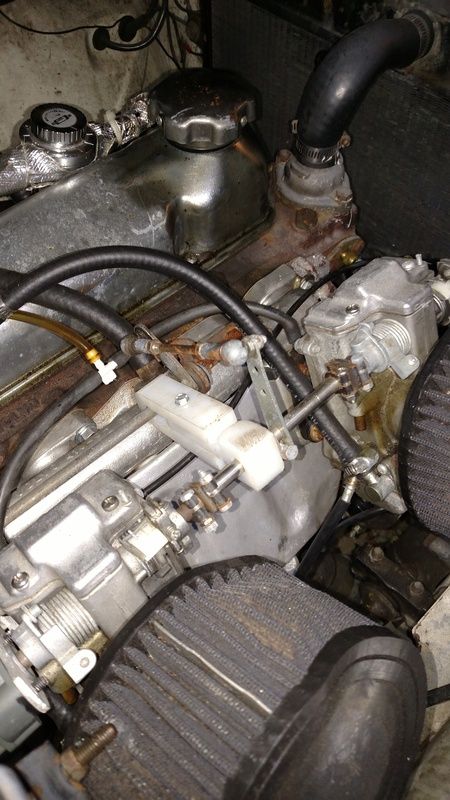I think I have first hand experience with all of the major carb options on a B18, other than SUs. My 122 came with a set of Mikunis.
The Mikunis work well. Rotation is not an issue, however they are flex mounted and designed to work with cables an not a linkage. The throttle linkage will push on them, causing the flex housing to bend, no matter how tight the hose clamp is. This causes two significant issues. The biggest being that the distance between the carb and intermediate throttle pivot will change, and can cause the linkage to go past a stability point and stick WFO. The second problems is that the damn carb can work itself lose and fall off. I solved that problem with a ghettotastic nylon link that holds the two pivots together.

As I said, the Mikunis work well, but not perfectly. Tuning is easy but tuning options are limited. I go from rich to lean between cruise and 25% throttle. That is all in the needle. There are a few needle options but the only difference is in the OD of the flat parallel section that really only comes into play during idle. All the needles have the same profile in the tapered sections. As a result I run around 11.5 AFR at cruise and get only 20 MPG.
I replaced the crappy weber downdraft on the 142 with a set of DCOEs. These are infinitely tunable and sound amazing. I have modern 152 models. They have an issue with the idle circuit that requires modifications for daily driving. If you go this route spend the extra money and get the 152G models, weber corrected the problems with the 152.
The big difference between the Webers and Mikunis is obviously the tunability of the webers. However the Mikunis are dead dog reliable, engine starts up immediately every time. The DCOEs always start, but it may take some fiddling with the choke when cold, and several seconds of cranking when hot. If you are interested in Mikunis do not bother dealing with John Parker. All he does is replace a pivot shaft, something anyone with a drill press and a pin punch can do.
Ignoring $$$, for a race car DCOEs are the better option.

